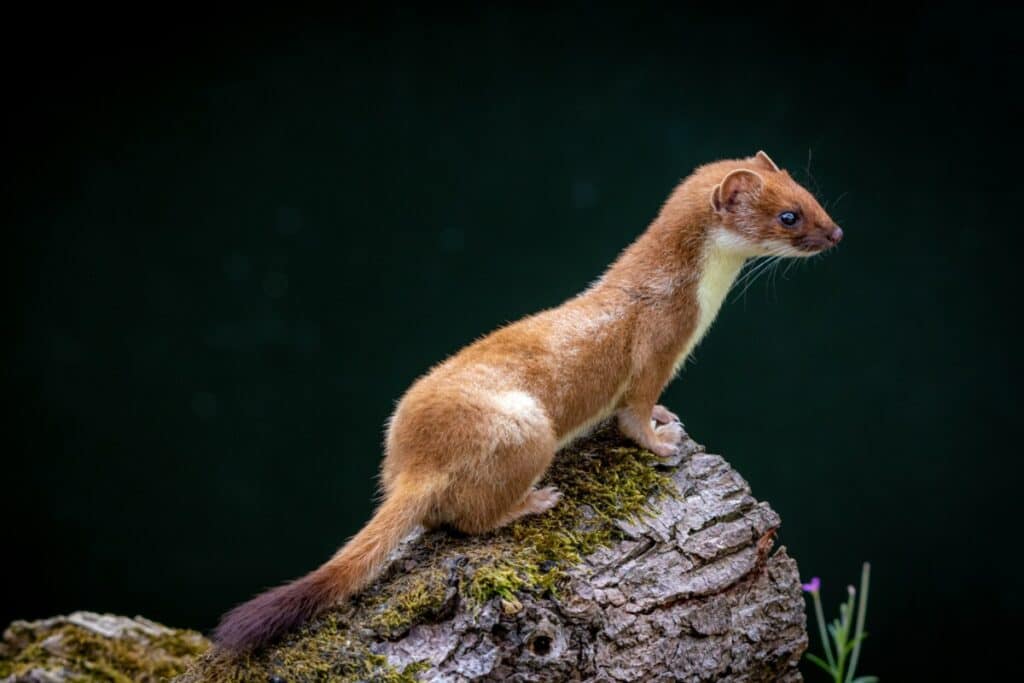Weasels are small, long-bodied carnivores that can be found in various parts of the world. They have an omnivorous diet which consists mostly of rodents and other small animals.
It is important to understand what weasels eat in order to better protect them as well as their habitats. This article will focus on the dietary habits of these fascinating creatures.
Weasel diets vary from species to species based upon their geographical locations and the availability of food sources. The most common type of prey eaten include mice, voles, shrews, rabbits, birds eggs, lizards and insects.
Additionally, some species may also consume fruits and vegetables depending upon availability. Some regions have even seen a shift towards scavenging behavior with carrion being added to their diets during times when more traditional food sources are scarce or unavailable.

Overview Of Weasel Diet
Weasels are carnivorous mammals that have adapted to a wide range of habitats. They typically feed on small mammals such as mice and voles, but their diet can vary depending upon the environment in which they live.
Weasels also consume carrion when available, an adaptation strategy for times when food sources are scarce. In addition to rodents, weasels will also hunt birds, lizards, frogs, insects and other invertebrates.
In some regions they may even eat fruit or berries if those foods are present. While hunting is the main way that weasels get their food, they occasionally scavenge eggs from nests or take advantage of carcasses left behind by other predators.
Weasel Behavior Unveiled: Insights into Their Lives
Rodents As Primary Food Source
Weasels are carnivorous mammals that have a natural inclination to feed on small rodents. These social animals hunt for their prey using quick, precise movements and strategies such as chasing after them in the open or pouncing from above. Their diet is primarily composed of mice, voles, shrews, rabbits, squirrels and birds.
The weasel’s sharp claws allow it to easily capture its targeted meal while relying on its strong sense of smell to detect hidden sources of food. In addition to hunting alone at night, they also employ cooperative efforts when looking for sustenance; with members taking up specific roles necessary in order to increase efficiency during their search.
Despite being able to feast upon insects, eggs and carrion (dead animal flesh), these animals tend to prefer fresh meat due to its higher nutritional content. Understanding the habitats where different species of weasels reside and what they consume can provide valuable insight into their behavior patterns and how best to manage them.
Weasel Chronicles: Unraveling Their Unique Characteristics
Insects And Reptiles
Weasels are omnivorous mammals, meaning they will eat both plant and animal matter. They have an appetite for small animals such as mice, frogs, and birds, but also enjoy eating insects, fruit, eggs, and fungi. Their diet changes depending on the season; in summer months their diet consists of more fruits and vegetables while during winter weasels mostly feed on small animals.
Weasels hunt by ambush or stalking prey using stealth tactics like hiding under leaves or snow to catch unsuspecting rodents. To find food during colder times of the year when there is less available vegetation they may travel long distances searching for a meal.
Weasels can even climb trees to reach nests of eggs or young birds which make up a significant part of their diet. In addition to hunting smaller animals and scavenging bird eggs and nestlings, weasels sometimes also consume carrion (dead animal remains).
Through this varied diet, weasels are able to survive in many different habitats across the world.
How Big Are Weasels: Unveiling the Size of Agile Mustelids
Fruits And Vegetables
When it comes to their dietary needs, weasels are highly adaptable. When they’re in search of sustenance, these carnivorous mammals will eat anything from insects and small rodents to amphibians and birds’ eggs.
Fruits and vegetables also make up an important part of a weasel’s diet, which can vary depending on the season or availability of food sources. In springtime when vegetation is plentiful, fruit makes up around 20% of what a weasel consumes while in summer months this number increases slightly due to the abundance of berries that ripen at this time.
During winter however, when fresh produce is harder to come by, roots and tubers become more prominent in their meals as well as any other type of animal protein they can get their hands on. Weasels have even been known to scavenge for scraps left behind by humans such as chicken bones or crumbs.
It is clear that these animals possess an impressive ability to meet their nutritional requirements through whatever means necessary.
Weasel’s Predators Revealed: Unmasking Their Natural Adversaries
Scavenging Behavior
Weasels are scavengers and their diet is opportunistic, depending on the availability of food. They primarily feed on small mammals such as voles, mice, rats, rabbits, hares and squirrels but have also been known to eat birds’ eggs and nestlings, lizards, snakes and insects.
During periods when they cannot access these items they will supplement their diet with fruits, vegetables and even carrion.
The social dynamics of weasel behavior can significantly affect their hibernation habits in terms of how much food needs to be stored before entering a dormant state during winter months. In some areas where there are large populations of weasels living together in close proximity, an individual may enter into torpor for weeks or even months at a time without needing additional food stores due to the ability to share resources with other members of its group.
Weasels exhibit remarkable adaptability and resourcefulness that allows them to survive in many different climates and environments throughout the world.

Conclusion
Weasels are a diverse group of animals, with some species more adept at hunting than others. While they can be found in many habitats around the world and their diet varies accordingly, it is clear that rodents make up a large portion of what weasels eat.
In addition to this, insects and reptiles form part of their diet as well as fruits and vegetables when available. Furthermore, these opportunistic creatures often scavenge for food where they can find it.
By understanding the dietary habits of weasels, humans gain valuable insight into how best to coexist with them in our shared environments.
Humans have long been wary of wild predators such as weasels – but perhaps if we take the time to understand their needs and dietary preferences then maybe there’s an opportunity for us all to live side by side!
After all, sharing is caring… right? So why not give these furry little carnivores the chance to show us just how much they have to offer? Who knows – maybe one day soon you’ll be able to share your lunch break with a friendly neighborhood weasel.

